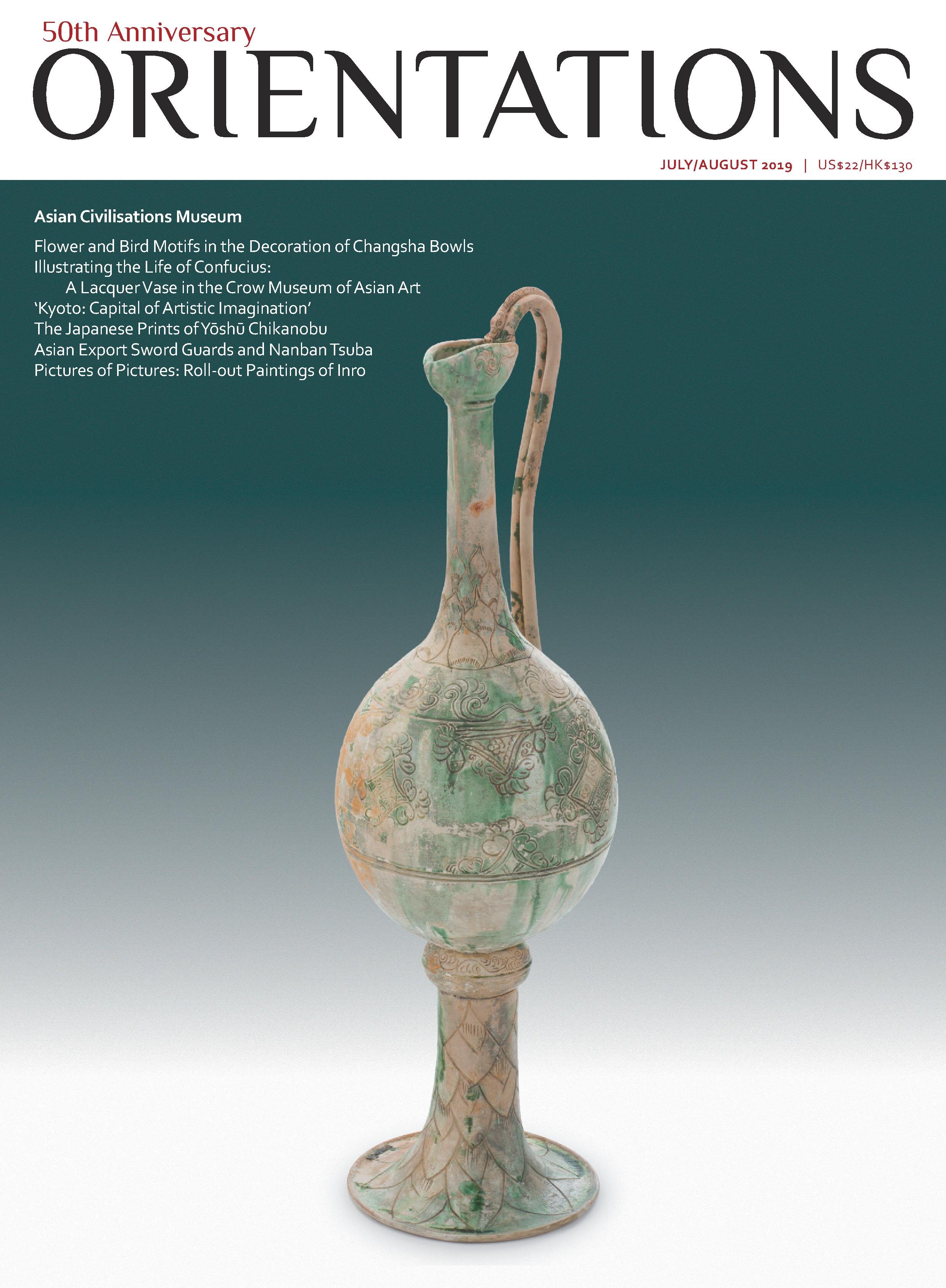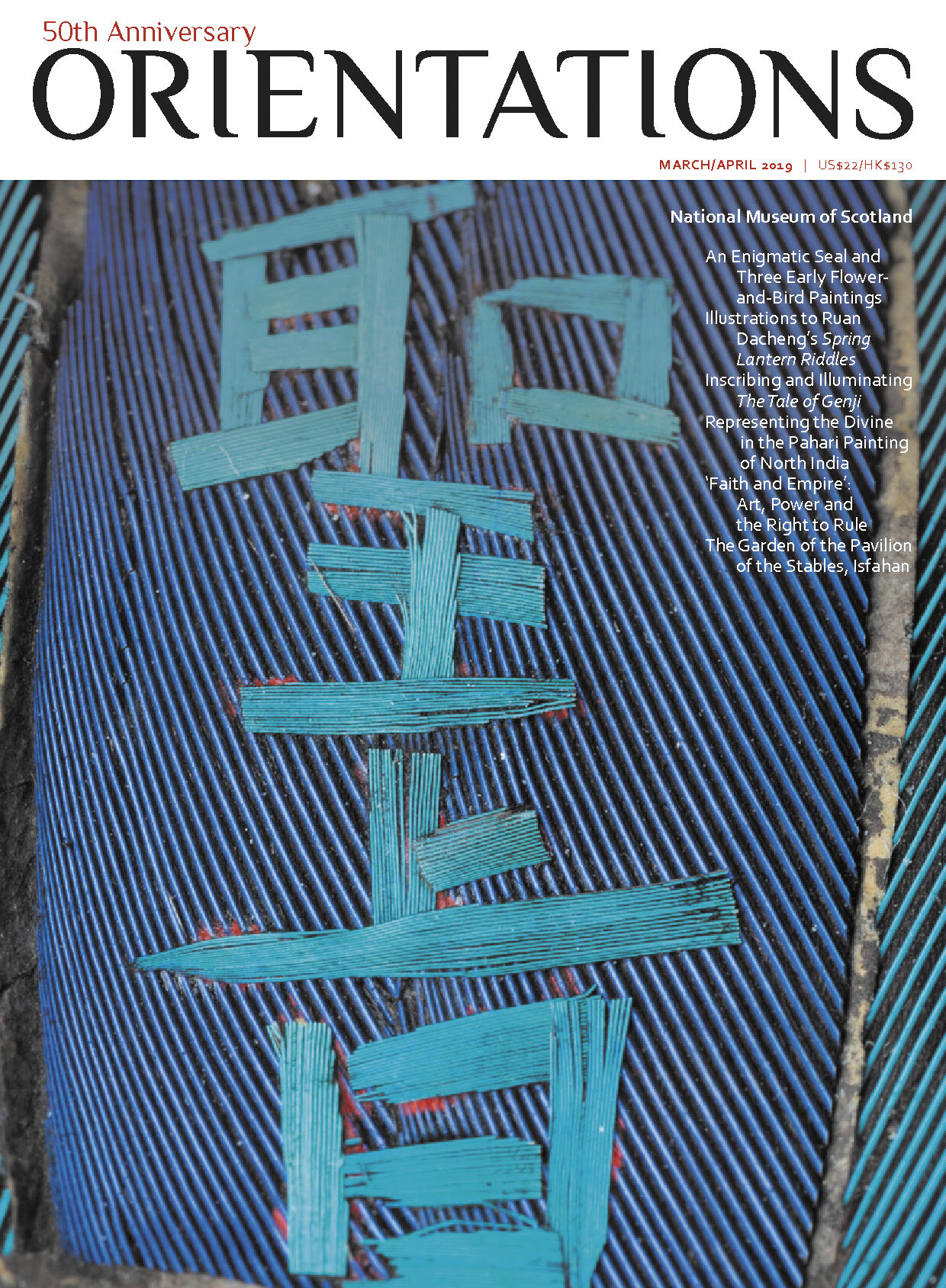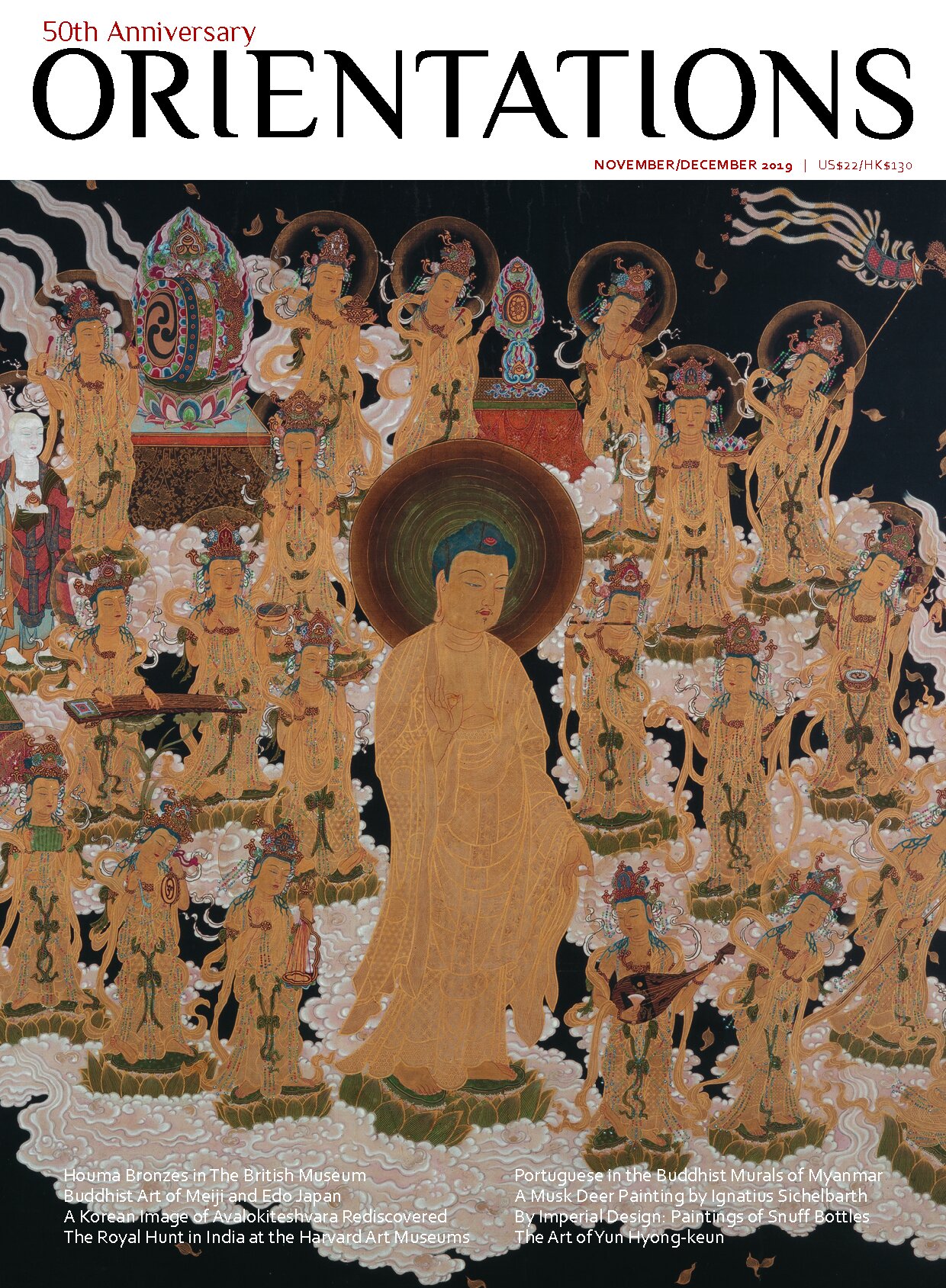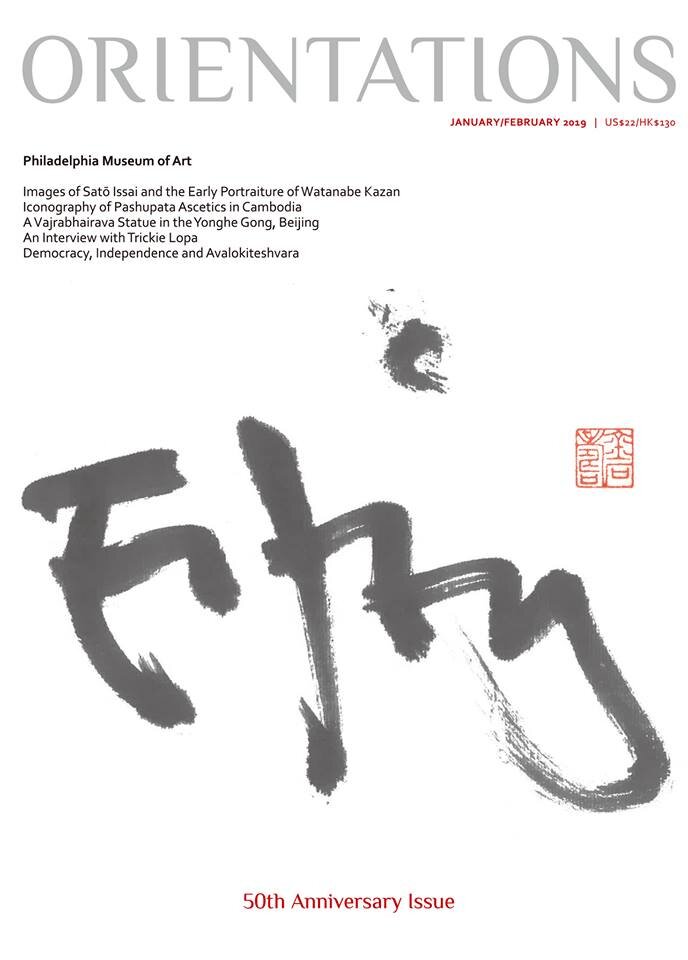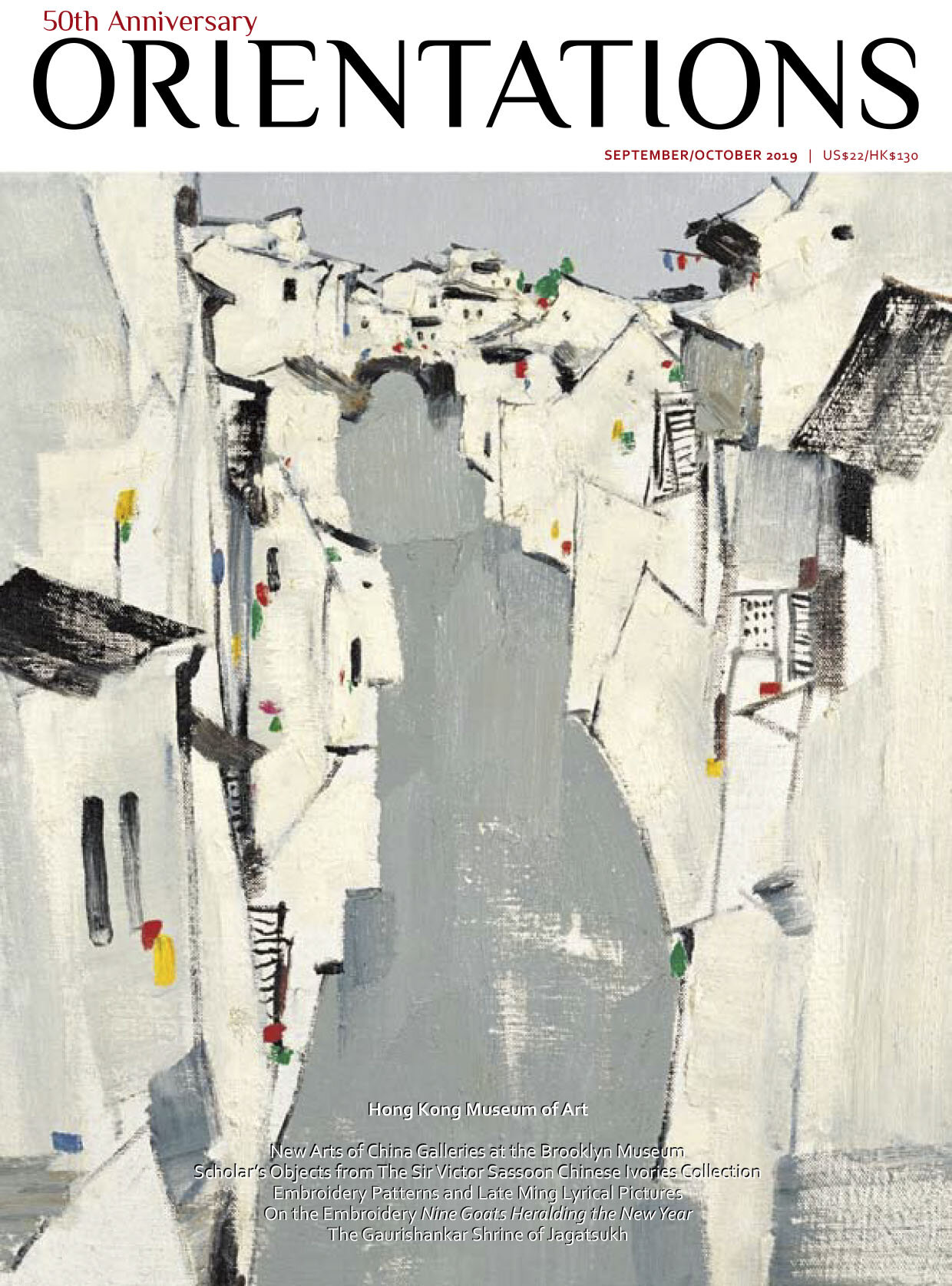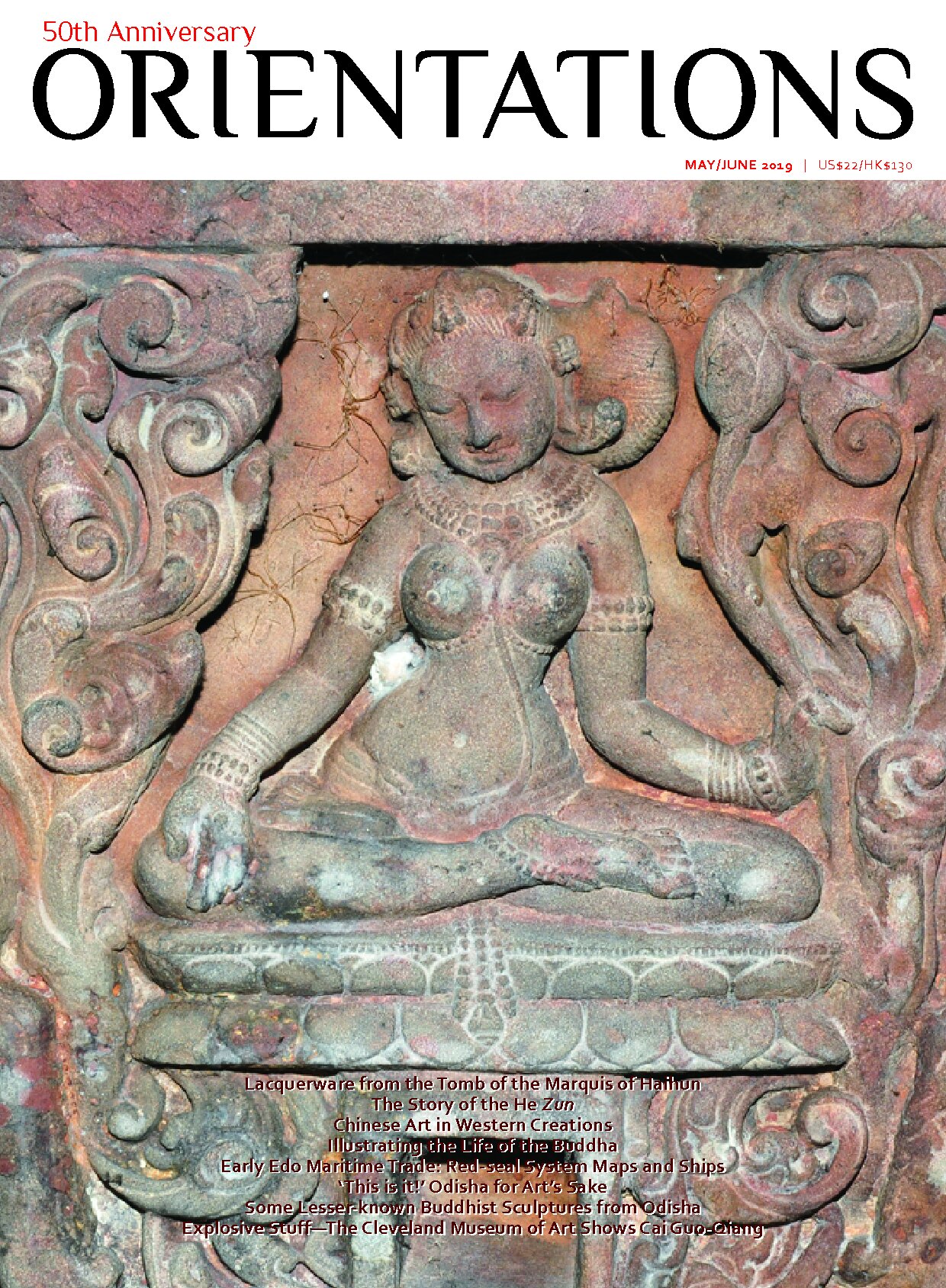JUL/AUG 2019
VOLUME 50 - NUMBER 4
In order to better reflect Singapore’s identity as a multicultural trading hub and port, the island city-state’s Asian Civilisations Museum (ACM) has recently overhauled both its collecting strategy and display. Instead of a regional approach, the galleries are now organized by theme—Trade, Faith and Belief, and Materials and Design—thereby emphasizing interconnectedness and exchange instead of boundaries and division. Director Kennie Ting introduces the revamped ACM, while the curators explain the different galleries. Liu Yang expands on the ceramics in the ACM’s Tang Shipwreck gallery with an article on the flower and bird motifs on the Changsha bowls. Continuing with Chinese art, Chang Qing takes an in-depth look at a Qing dynasty lacquer vase in the Crow Museum of Asian Art depicting scenes from the life and legends of Confucius—an unusual subject for a work in this medium and based on scenes from a painting or book.
The other articles in the issue are devoted to Japanese art. Monika Bincsik shares highlights from The Metropolitan Museum of Art’s exhibition ‘Kyoto: Capital of Artistic Imagination’, while Meher McArthur examines woodblock prints by Yōshū Chikanobu (1838–1912) in the collection of Scripps College—of particular interest because of Chikanobu’s close personal relationship with the changes taking place in Japan at the time. James Lancel McElhinney discusses the role and symbolism of sword guards, and Peter Suart gives us a picture of his roll-out paintings of inro.
FEATURES
Kennie Ting. Asian Civilisations Museum, Singapore – Connecting Peoples and Cultures in Asia
Stephen A. Murphy and Clement Onn. Trade and the Maritime Silk Routes: Level One Galleries at the Asian Civilisations Museum
Theresa McCullough, Stephen A. Murphy, Clement Onn and Noorashikin Zulkifli. Faith and Belief: Level Two Galleries at the Asian Civilisations Museum
Liu Yang. Flower and Bird Motifs in the Decoration of Changsha Bowls
Chang Qing. Illustrating the Life of Confucius: A Cinnabar Lacquer Vase in the Crow Museum of Asian Art
Meher McArthur. The Japanese Prints of Yoshu Chikanobu: Transition and Tradition
James Lancel McElhinney. Symbols of Status and Artistry: Asian Export Sword Guards and Nanban Tsuba
Peter Suart. Pictures of Pictures
REVIEWS
Monika Bincsik. 'Kyoto: Capital of Artistic Imagination'
Tanja Tolar. Lapis and Gold: Exploring Chester Beatty's Ruzbihan Qur'an by Elaine Wright
TRIBUTE
Puay-peng Ho. Ieoh Ming (I. M.) Pei (1917-2019)
CURATOR’S CHOICE
Guilhem Andre. Strange and Marvellous Encounters
VOLUME 50 - NUMBER 4
In order to better reflect Singapore’s identity as a multicultural trading hub and port, the island city-state’s Asian Civilisations Museum (ACM) has recently overhauled both its collecting strategy and display. Instead of a regional approach, the galleries are now organized by theme—Trade, Faith and Belief, and Materials and Design—thereby emphasizing interconnectedness and exchange instead of boundaries and division. Director Kennie Ting introduces the revamped ACM, while the curators explain the different galleries. Liu Yang expands on the ceramics in the ACM’s Tang Shipwreck gallery with an article on the flower and bird motifs on the Changsha bowls. Continuing with Chinese art, Chang Qing takes an in-depth look at a Qing dynasty lacquer vase in the Crow Museum of Asian Art depicting scenes from the life and legends of Confucius—an unusual subject for a work in this medium and based on scenes from a painting or book.
The other articles in the issue are devoted to Japanese art. Monika Bincsik shares highlights from The Metropolitan Museum of Art’s exhibition ‘Kyoto: Capital of Artistic Imagination’, while Meher McArthur examines woodblock prints by Yōshū Chikanobu (1838–1912) in the collection of Scripps College—of particular interest because of Chikanobu’s close personal relationship with the changes taking place in Japan at the time. James Lancel McElhinney discusses the role and symbolism of sword guards, and Peter Suart gives us a picture of his roll-out paintings of inro.
FEATURES
Kennie Ting. Asian Civilisations Museum, Singapore – Connecting Peoples and Cultures in Asia
Stephen A. Murphy and Clement Onn. Trade and the Maritime Silk Routes: Level One Galleries at the Asian Civilisations Museum
Theresa McCullough, Stephen A. Murphy, Clement Onn and Noorashikin Zulkifli. Faith and Belief: Level Two Galleries at the Asian Civilisations Museum
Liu Yang. Flower and Bird Motifs in the Decoration of Changsha Bowls
Chang Qing. Illustrating the Life of Confucius: A Cinnabar Lacquer Vase in the Crow Museum of Asian Art
Meher McArthur. The Japanese Prints of Yoshu Chikanobu: Transition and Tradition
James Lancel McElhinney. Symbols of Status and Artistry: Asian Export Sword Guards and Nanban Tsuba
Peter Suart. Pictures of Pictures
REVIEWS
Monika Bincsik. 'Kyoto: Capital of Artistic Imagination'
Tanja Tolar. Lapis and Gold: Exploring Chester Beatty's Ruzbihan Qur'an by Elaine Wright
TRIBUTE
Puay-peng Ho. Ieoh Ming (I. M.) Pei (1917-2019)
CURATOR’S CHOICE
Guilhem Andre. Strange and Marvellous Encounters
VOLUME 50 - NUMBER 4
In order to better reflect Singapore’s identity as a multicultural trading hub and port, the island city-state’s Asian Civilisations Museum (ACM) has recently overhauled both its collecting strategy and display. Instead of a regional approach, the galleries are now organized by theme—Trade, Faith and Belief, and Materials and Design—thereby emphasizing interconnectedness and exchange instead of boundaries and division. Director Kennie Ting introduces the revamped ACM, while the curators explain the different galleries. Liu Yang expands on the ceramics in the ACM’s Tang Shipwreck gallery with an article on the flower and bird motifs on the Changsha bowls. Continuing with Chinese art, Chang Qing takes an in-depth look at a Qing dynasty lacquer vase in the Crow Museum of Asian Art depicting scenes from the life and legends of Confucius—an unusual subject for a work in this medium and based on scenes from a painting or book.
The other articles in the issue are devoted to Japanese art. Monika Bincsik shares highlights from The Metropolitan Museum of Art’s exhibition ‘Kyoto: Capital of Artistic Imagination’, while Meher McArthur examines woodblock prints by Yōshū Chikanobu (1838–1912) in the collection of Scripps College—of particular interest because of Chikanobu’s close personal relationship with the changes taking place in Japan at the time. James Lancel McElhinney discusses the role and symbolism of sword guards, and Peter Suart gives us a picture of his roll-out paintings of inro.
FEATURES
Kennie Ting. Asian Civilisations Museum, Singapore – Connecting Peoples and Cultures in Asia
Stephen A. Murphy and Clement Onn. Trade and the Maritime Silk Routes: Level One Galleries at the Asian Civilisations Museum
Theresa McCullough, Stephen A. Murphy, Clement Onn and Noorashikin Zulkifli. Faith and Belief: Level Two Galleries at the Asian Civilisations Museum
Liu Yang. Flower and Bird Motifs in the Decoration of Changsha Bowls
Chang Qing. Illustrating the Life of Confucius: A Cinnabar Lacquer Vase in the Crow Museum of Asian Art
Meher McArthur. The Japanese Prints of Yoshu Chikanobu: Transition and Tradition
James Lancel McElhinney. Symbols of Status and Artistry: Asian Export Sword Guards and Nanban Tsuba
Peter Suart. Pictures of Pictures
REVIEWS
Monika Bincsik. 'Kyoto: Capital of Artistic Imagination'
Tanja Tolar. Lapis and Gold: Exploring Chester Beatty's Ruzbihan Qur'an by Elaine Wright
TRIBUTE
Puay-peng Ho. Ieoh Ming (I. M.) Pei (1917-2019)
CURATOR’S CHOICE
Guilhem Andre. Strange and Marvellous Encounters

